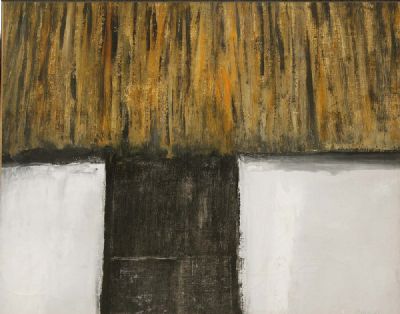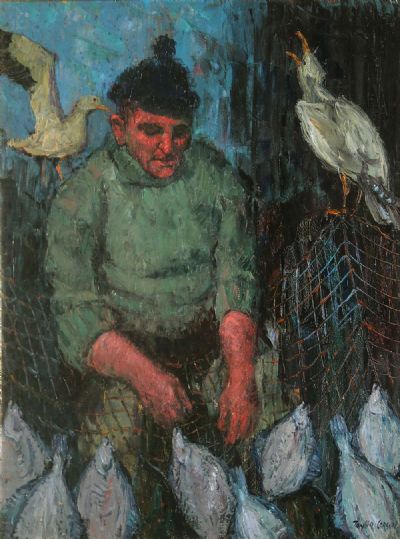Sean Keating
Lot 20
Sean Keating PPRHA HRA HRSA PRHA, 1889-1977 UNLOADING THE CATCH Oil on board, 28'' x 35'' (71 x 89cm), signed It was the stained glass artist, Harry Clarke, who first introduced Seán Keating to the Aran Islands in c. 1912-13. Thereafter Keating retu...
Read more
 Lot 20
Sean Keating
Estimate: €40,000 - €60,000
Result: €52,000
Lot 20
Sean Keating
Estimate: €40,000 - €60,000
Result: €52,000
 Lot 20
Sean Keating
Lot 20
Sean Keating
Estimate:
€40,000 - €60,000
Sean Keating PPRHA HRA HRSA PRHA, 1889-1977 UNLOADING THE CATCH Oil on board, 28'' x 35'' (71 x 89cm), signed It was the stained glass artist, Harry Clarke, who first introduced Seán Keating to the Aran Islands in c. 1912-13. Thereafter Keating returned as often as his busy timetable would allow. It was a place in which he found artistic inspiration, and peace and quiet away from the busy hustle of life as an artist in Dublin. His paintings of the Aran Islands, its people, and their traditional working methods, along with his self-portraits in which he appears dressed in Aran clothing, proved extraordinarily popular; several were shown to critical acclaim in major exhibitions in Ireland, England and North America, and he received many private commissions for scenes such as that illustrated in Unloading the Catch. Keating painted Unloading the Catch sometime between c. 1955-70. The scene features three hand-made currachs, or small fishing boats, each of which had room for two men and their fishing gear, and space for the night's catch of fish. The men are dressed in typical fisherman's clothing; heavy jackets or knitted pullovers, long home-spun shirts, ochre-coloured pants and the woven críos or belt. Their pampooties, or soft leather glove-like shoes, which were worn wet to help to negotiate the rough terrain, are hidden from view. Having spent the night fishing in calm seas, the men are unloading their little pile of fish in the early hours of the morning. Some attempt has been made to sort the fish in the foreground, which seems to consist of mackerel, possibly plaice, and one dark interloper on top of the pile that may be a small shark. The catch will be divided between the men, and brought away from the beach in woven baskets, known as creels, one of which can be seen under the oars to the left foreground. Keating loved to be outside, and he was as interested in painting the weather conditions on the Aran Islands as he was in recording the routines of the people. As a result, the clouds in Unloading the Catch show evidence of the early rising sun, and the sea, although ostensibly calm, is bubbling from its murky depths, while a small but powerful surge meanders its way to the sandy beach. Keating loved to travel, and he spent some time at sea on board the Irish Shipping vessel, The Hazel, between 1947 and 1948, during which time he got as far as Algeria. His experiences at sea were vital to his artistic vision. He began to use more colour and texture in his rendition of the sky and water, which is evident to excellent effect in this example of his work. Keating was always interested in visually recording contemporary life on the islands. He spent a week there every year from early in his career until 1965. From the 1930s onwards he utilized photographs, and cine camera footage, along with sketches, and previous paintings, to construct his much sought-after images. As a consequence of his curiosity, and his keen eye, paintings such as Unloading the Catch offer the twenty-first century viewer a glimpse of bygone tradition, the memory of which might be otherwise lost owing to the contradictory constraints of modernity. ©Dr Éimear O'Connor HRHA Research Associate TRIARC-Irish Art Research Centre Trinity College Dublin May 2014.
Sign-up to our auction alert
Signup for personalised Irish art recommendations, invitations to viewings and auctions, articles and more.





